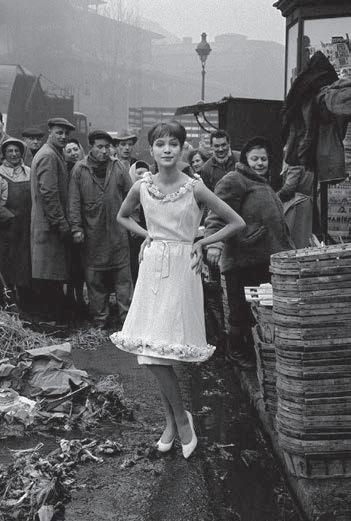
2 minute read
Sophie Calle. Introduction by Clément Chéroux
12.5 × 19 cm 144 pages 70 black and white and color photographs softback photo poche n° 88 june 2022 retail price: 13.90 €
new revised edition
Virginie Chardin is a specialist in photography and imagery. She has curated a number of exhibitions including Willy Ronis à Paris (2005) and Sabine Weiss (2021). She worked at the Chalonsur-Saône image department (1998-2000), as award chief at the Rencontres d’Arles (2002-2003) and as artistic delegate for the Mois de la Photo in Paris (2004). She has written multiple books of the “Photo Poche” collection including Sabine Weiss (Actes Sud, 2021).
Exhibition organized by Jeu de Paume at the Château de Tours from June 2022 which will then tour abroad. Exhibition at Librairie du Méjan during the Rencontres d’Arles 2022.
event
Introduction by Virginie Chardin
The “Photo Poche” series pays tribute to Frank Horvat (who recently passed away at the age of 92) with a new revised edition. He is renowned for bringing a form of natural aesthetics derived from documentaries to 1950s to fashion photography. But his work was also revisited after his Boulogne-Billancourt studio archives were made available. Born in Abbazia in Italy in 1928, Frank Horvat began his photography career in 1950. A journey of initiation to Pakistan and India from 1952-1954 was a turning point for him. It brought his work to the attention of the international press and his photography was included in the famous “The Family of Man” exhibition at New York’s moma in 1955. Having settled in Paris in 1956, he produced photo stories for Réalités and Jours de France and went on to report on prostitution and Paris by night, as well as an extensive personal exploration of the city. His grainy images of Paris drew the attention of Jacques Moutin, the artistic director of Jardin des Modes. Moutin suggested he replicate his gritty urban style in fashion photography. This fresh brust of spontaneity and humor transformed Frank Horvat into an international star who worked for the greatest fashion journals in the 1980s like Vogue, Harper’s Bazaar, Glamour, Queen and Stern. He always sought to escape the stereotypes of photography whether producing documentary or fashion work. In 1962-63 he produced his first major photographic series which led him to twelve big cities around the world. There he was driven by his fascination for the night, a time when people finally let their hair down and reveal their true selves. In the early 1980s, he turned his attention to New York and sought out those abandoned by society, producing series of affectionate portraits which expressed his own personal reflections on passing time and his own presence in the world.












